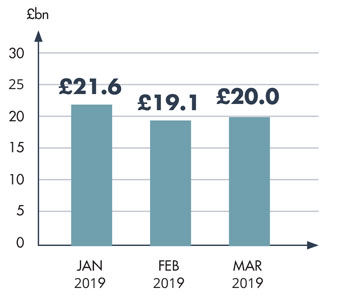Residential Property Review May 2019
CALLS FOR A COMPULSORY ‘SNAGGING RETENTION’ ON NEW BUILDSA recent survey by New Home Review has revealed that more than nine out of 10 new-build homes in the UK have defects and almost 40% of new builds fail to meet their original deadline. Following on from this, the HomeOwners Alliance have launched a campaign aimed at clamping down on developers of new-build homes who leave buyers with an unacceptable list of ‘snags’ and defects, ranging from poor finishes and ineffective insulation, to dangerous structural and electrical problems. The Homeowners Alliance campaign proposes introducing a snagging retention of at least 2.5%, whereby new-build homebuyers retain a percentage of the cost of their house, until all faults are fixed, only handing this over six months after moving into their new home. Currently, snagging retentions are common practice for commercial clients but are not generally available to individual new home buyers. BREXIT DELAY SEES AN INCREASE IN PROPERTY LISTINGSAccording to the latest property supply index, there was a surge in owners listing their properties in the days after Brexit was delayed again, with listings up 0.8% in April, month on month. Analysis by online estate agent, Housesimple, revealed that almost half (49%) of major UK towns and cities saw a rise in new properties coming onto the market in April compared to March. The overall picture in London showed new listings down by 1.4% in April compared to March, but four in 10 boroughs actually saw supply levels rise, with the biggest rise occurring in Kensington and Chelsea, with listings up by 17.3%. Regionally, the biggest month on month rise was in Stevenage at 69.4%, followed by a rise of 43.8% in Salford, while Chichester saw a rise of 33.8%. Sam Mitchell, Housesimple Chief Executive Officer said: “This latest six month delay provides a wider window of opportunity for homeowners to market while interest rates remain competitive and attractive to buyers“. INCREASE IN AVERAGE RENTS IN THE UKData from Landbay Rental Index shows the average rent paid for a property in the UK is now £1,218 per month, up by 0.96% in the 12 months to April 2019. Excluding London, the average rent in the rest of the UK was £773 per month, with Scotland recording the highest annual growth at 1.78%; Edinburgh being Scotland’s rental hotspot with an annual increase of 5.44%. John Goodall, CEO of Landbay said: “Landlords can rest assured that there is decent rental growth to be found across the UK, particularly if they look north of London“. STAMP DUTY RECEIPTS FALLTax receipts from Stamp Duty on property sales fell by £1bn over the last tax year, to a total of £11.9bn according to latest figures from HMRC. However, Capital Gains Tax, which is payable when buy-to-let homes are sold, rose to £9.2bn, up from £7.8bn a year earlier. The decline in Stamp Duty has been blamed on a decline in buy-to-let purchases and a slowdown in the higher end of the property market, in addition to the majority of first-time buyers having been removed from the tax. |
| Back to top |
HOUSE PRICES HEADLINE STATISTICS |
|||||||||
|
| Back to top |
HOUSE PRICES PRICE CHANGE BY REGION |
||||||||||||||||||||||||||||||||||||||||||||||||||||||||||||||||||||||||
|
| Back to top |
AVERAGE MONTHLY PRICE BY PROPERTY TYPE – MAR 2019 |
|||||||||||
Source: The Land Registry
|
| Back to top |
MORTGAGE ACTIVITY |

|
| Back to top |
| It is important to take professional advice before making any decision relating to your personal finances. Information within this document is based on our current understanding and can be subject to change without notice and the accuracy and completeness of the information cannot be guaranteed. It does not provide individual tailored investment advice and is for guidance only. Some rules may vary in different parts of the UK. |
